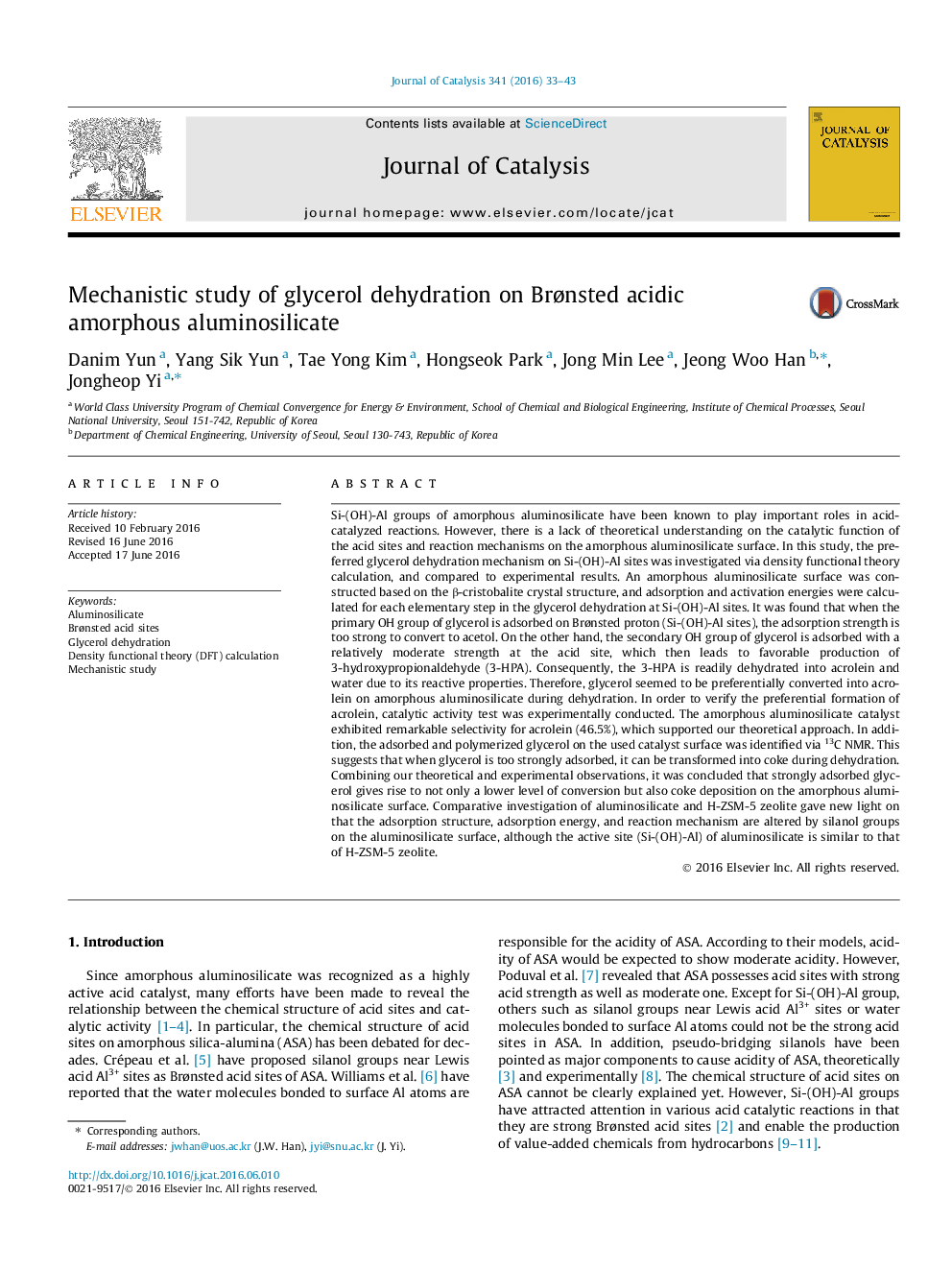| کد مقاله | کد نشریه | سال انتشار | مقاله انگلیسی | نسخه تمام متن |
|---|---|---|---|---|
| 60484 | 47534 | 2016 | 11 صفحه PDF | دانلود رایگان |
• The preferred glycerol dehydration mechanism over ASA was investigated.
• Selectivity depends on which OH group is firstly eliminated by Brønsted proton.
• Acrolein rather than acetol is favorably produced in ASA with low activation energy.
• ASA showed different glycerol dehydration mechanism from HZSM-5.
Si-(OH)-Al groups of amorphous aluminosilicate have been known to play important roles in acid-catalyzed reactions. However, there is a lack of theoretical understanding on the catalytic function of the acid sites and reaction mechanisms on the amorphous aluminosilicate surface. In this study, the preferred glycerol dehydration mechanism on Si-(OH)-Al sites was investigated via density functional theory calculation, and compared to experimental results. An amorphous aluminosilicate surface was constructed based on the β-cristobalite crystal structure, and adsorption and activation energies were calculated for each elementary step in the glycerol dehydration at Si-(OH)-Al sites. It was found that when the primary OH group of glycerol is adsorbed on Brønsted proton (Si-(OH)-Al sites), the adsorption strength is too strong to convert to acetol. On the other hand, the secondary OH group of glycerol is adsorbed with a relatively moderate strength at the acid site, which then leads to favorable production of 3-hydroxypropionaldehyde (3-HPA). Consequently, the 3-HPA is readily dehydrated into acrolein and water due to its reactive properties. Therefore, glycerol seemed to be preferentially converted into acrolein on amorphous aluminosilicate during dehydration. In order to verify the preferential formation of acrolein, catalytic activity test was experimentally conducted. The amorphous aluminosilicate catalyst exhibited remarkable selectivity for acrolein (46.5%), which supported our theoretical approach. In addition, the adsorbed and polymerized glycerol on the used catalyst surface was identified via 13C NMR. This suggests that when glycerol is too strongly adsorbed, it can be transformed into coke during dehydration. Combining our theoretical and experimental observations, it was concluded that strongly adsorbed glycerol gives rise to not only a lower level of conversion but also coke deposition on the amorphous aluminosilicate surface. Comparative investigation of aluminosilicate and H-ZSM-5 zeolite gave new light on that the adsorption structure, adsorption energy, and reaction mechanism are altered by silanol groups on the aluminosilicate surface, although the active site (Si-(OH)-Al) of aluminosilicate is similar to that of H-ZSM-5 zeolite.
Figure optionsDownload high-quality image (210 K)Download as PowerPoint slide
Journal: Journal of Catalysis - Volume 341, September 2016, Pages 33–43
